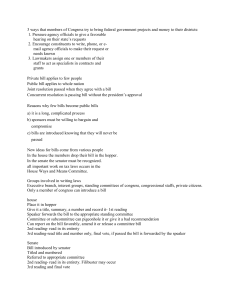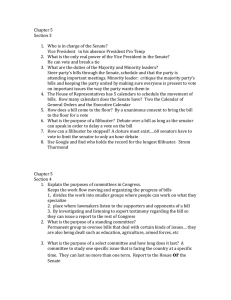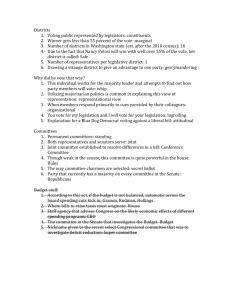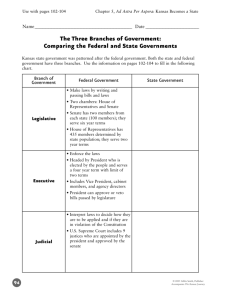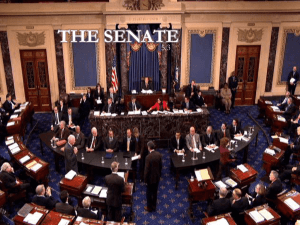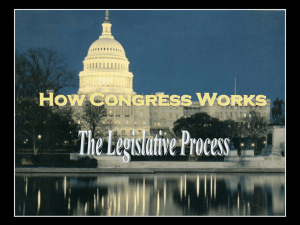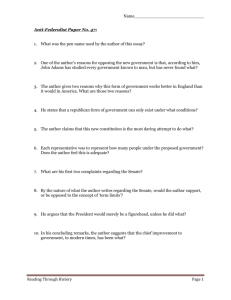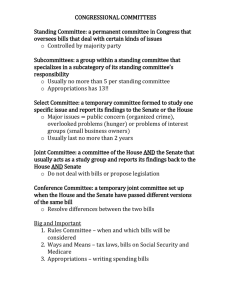How a Bill becomes a Law - Methacton School District
advertisement
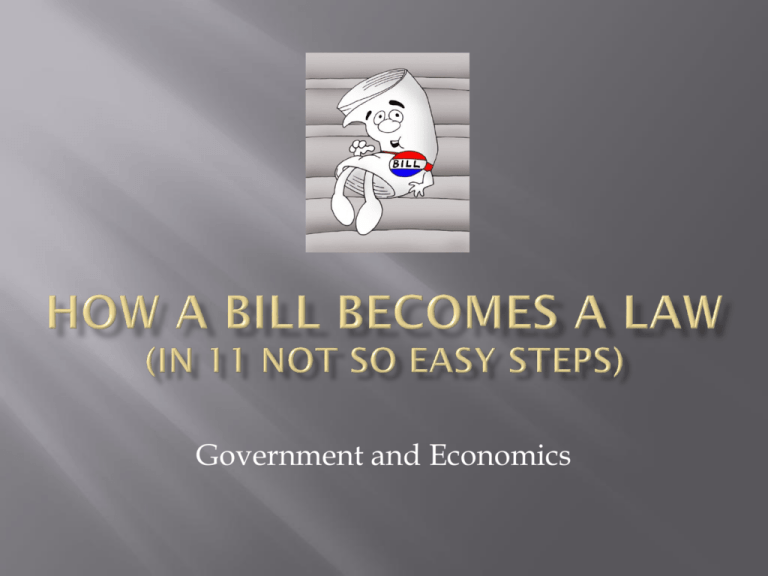
Government and Economics Bill is placed in the ‘Hopper’ The Bill is given a label Bills in the House are labeled ‘H.R.’ Ex: HR117 Bills in the Senate are labeled ‘S’ Ex: S210 Speaker of the House assigns the bill to a standing committee Ex: a bill dealing with electric cars would be sent to the Energy and Commerce committee The majority party gets to chair the committee and will usually have a majority of the seats on the committee The committee acts as a filter, deciding which legislation makes it to the House floor Bills can be recommended, pigeonholed, amended, or changed altogether The vast majority of bills are ‘pigeonholed’: put away, never to be acted on If the committee reports the bill favorably it goes to…….. If the House Rules committee schedules the bill, it will be heard by the entire House The Rules Committee sets ‘rules’ for the bill (ex: how long it can be debated, etc.) If they don’t grant a rule for the bill, the bill dies Types of votes: Voice votes (Ayes and Nays) Standing vote Teller vote Roll call: electronic If the Nays win, the bill is dead If the Ayes win……… Bill goes first to the desk of the President Pro Tempore of the Senate As in the House, the Bill can be recommended, pigeonholed, amended, or changed altogether Watch out for the FILIBUSTER! In the Senate, a Senator can talk as long as he or she wants to. This is usually done to stop the vote on a bill. It was used a lot during the Civil Rights movement by southern Senators Senator Strom Thurmond of SC holds the record for longest single filibuster: 24 hours and 18 minutes to block a Civil Rights bill in 1957 If the Bill passes the Senate…….. Barack Obama on Gun Control (4/8/13) Jimmy Stewart from “Mr. Smith Goes to Washington” The Conference Committee is a JOINT committee of members of both the HOUSE and the SENATE. They have to work out the wording of the bill so that the House and Senate versions are EXACTLY the same If they can’t agree, the Bill is dead Once they have agreed, the bill goes back to both chambers for ANOTHER vote The President can: Sign it. It becomes law Veto it. It goes back to the Congress for possible override Do nothing. After 10 days, it becomes law Pocket veto: If Congress adjourns in less than 10 days and the President hasn’t signed it, it dies. If the President decides to sign it…. Congratulations Bill……… now you’re a LAW!
